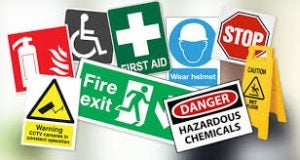SD35 Occupational Heath & Safety
CUPE Health and Safety Resources
Bulletin #23 – CUPE K-12 Site Safety Committees
September 3, 2020
CUPE K-12 site health and safety committees do not fall under the jurisdiction of WorkSafeBC. The Workers Compensation Board and the Workers Compensation Act only recognize the joint health and safety committee, not the central /district joint safety committee or CUPE site/local health and safety committees. CUPE K-12 site health and safety committees identify problems and bring them to their local’s joint health and safety committee to address.
- What does a site health and safety committee do?
Site safety committee members are the eyes and ears of safety for their specific site. Get to know who your CUPE site contact is. They know their workplace and gather information to provide to their local’s joint health and safety committee. Site safety committee members are crucial during the pandemic to give feedback if the district safety plan and site safety plans need to be modified as we move through the fall and winter. If they see anything unsafe at work, they need to bring it to their local’s joint health and safety committee.
- How does the site committee know what safety guidelines are in place?
Site committee members need to be familiar with the Provincial COVID-19 Health & Safety Guidelines for K-12 Settings as well as the district safety plan and any site-specific guidelines in place at their schools. All district safety plans have been approved and are on the district’s individual website. The provincial guidelines document is regularly updated and can be found here.
- What are the responsibilities of committee members?
Site committee members note issues that are unsafe. They are sometimes a point of contact for members working at the site who notice safety issues that need to be addressed. Get to know who your Committee members should refer to the Provincial COVID-19 Health & Safety Guidelines for K-12 Settings and safety plan for their district, especially during the pandemic. They sometimes also assist their local joint health and safety committee and the employer with member safety.
- How does a site health and safety committee work with the district?
CUPE K-12 site health and safety committees report concerns or issues in the school directly to the local’s joint health and safety committee. The joint committee then raises it with the district. The local’s joint health and safety committee, in consultation with the local, may ask the site committee to assist in other ways.
- My school doesn’t have a site health and safety committee. How do we get one?
Contact your local immediately, as these committees are crucial as our members return to work at schools.
- Is the site health and safety committee a joint committee that includes the union and management?
Typically, site committees include one or more representatives from each union or association and the site administrator.
What should our site safety committee do when we see safety guidelines aren’t being followed?
It is important to remember that the site committee is in addition to the required local joint health and safety committee. The site committee should refer their issues and concerns to the local’s joint health and safety committee which deals with issues arising throughout the district. The joint health and safety committee should try to resolve the issues and concerns, including by making formal and informal recommendations as part of the committee’s mandate. Where this is not successful, the joint health and safety committee may contact WorkSafeBC for assistance. In addition, workers always have the right to refuse unsafe work under Section 3.12 of the OHS Regulations.
Driving Students
Unless it is SPECIFICALLY written in your job description – driving students is VOLUNTARY. You do not have to do it. It is up to each individual; however, the union strongly recommends against it for the following reasons:
1) ICBC and other insurance will not give us a “blanket” yes/no answer as to whether or not a person driving a student is covered; it depends on the insurance you carry (to/from work; personal only; etc). The union does have personal knowledge of someone who has had their (non ICBC portion) insurance denied coverage for driving students; ICBC says “it depends”.
Please ensure you contact your own insurance company to discuss your personal policy to ensure if you are covered or not. It is not cut and dry.
You MUST carry a higher liability than most personal insurance covers. The School District will pay the difference – but it is up to you to ensure you have it.
2) District will only pay $200 of a person’s deductible if they are in an accident. If your deductible is more than $200 – you are on the hook for the rest. Also, an accident COULD affect your safe driving record and/or your insurance rates could go up in future years – and you are responsible for all those costs.
3) Risk Assessment – is there a safety plan/risk assessment involved? If a student chokes, has a seizure or other medical emergency while you are driving and/or if you are the only adult in the car with them . . . then what? What is the plan? There are many potential hazards that could be involved.
4) Harming a member – it is the union’s assertion that by driving students for a field trip, etc. and the school or district not hiring a bus/driver, we are taking work away from bus drivers.
After taking everything above into consideration, this ultimately is a decision members must make on their own, but the union strongly recommends against it.
————————————–
Useful links to health and safety
http://www.ccohs.ca/topics/hazards/health/#ctgt_1-6
Education in Health and Safety
FREE Course on Mental Health
http://www.ccohs.ca/products/courses/mh_awareness/



